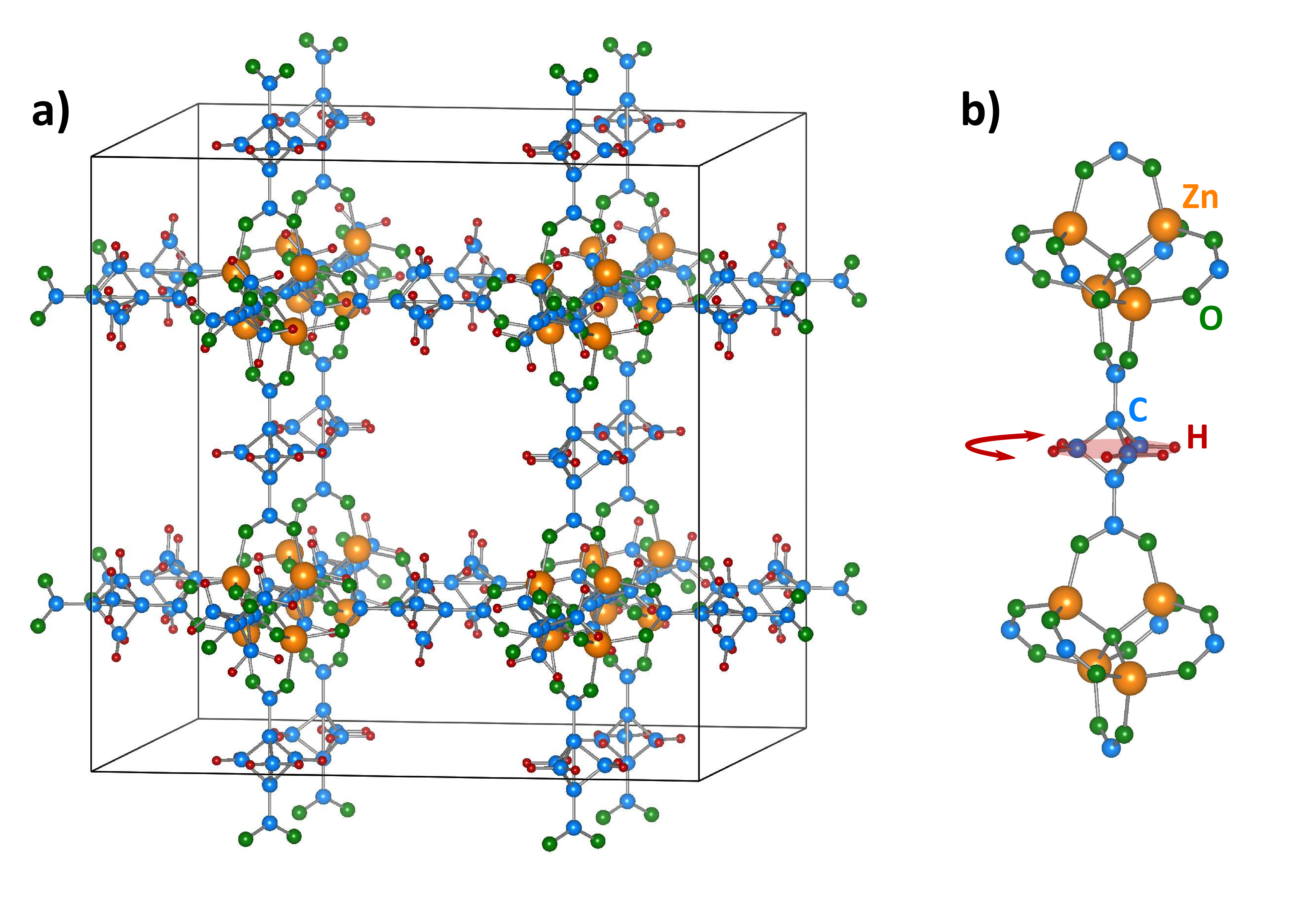Molecular rotors
The results of a recent study of the exceptional dynamical properties of molecular rotors engineered in porous materials have been published on Nature Chemistry. The work has been carried out by Dr Giacomo Prando and Prof Pietro Carretta at the Laboratory for nuclear magnetic resonance at the Department of Physics (University of Pavia) in collaboration with the research group of Profs Angiolina Comotti and Piero Ernesto Sozzani at the Department of Materials science (University of Milano-Bicocca).
Research on molecular machines is a very active field lying at the boundary between chemistry, physics and materials science whose ultimate aim is to control the mechanical motion of molecular objects in order to implement useful tasks at the nanoscale. Prototypal examples of these objects range from molecular switches to molecular shuttles. Similarly to everyday-life motors – such as those in cars – where rotating components are of the upmost importance, the realization of motors of molecular size requires the design and engineering of rotating functional chemical groups with highly controlled properties.

In this context, recent research activities have been devoted to the synthesis of porous materials known as MOFs (from Metal-Organic Frameworks), where the rotating moieties are sustained along well-defined orientations by a fixed crystalline structure acting as stator. The high porosity of MOFs guarantees enough free space around each moving molecule, facilitating the rotary motions by limiting detrimental interactions with the crystalline surroundings. In recent years, this strategy has allowed researchers to demonstrate the preservation of fast molecular rotary dynamics along controlled directions and at temperatures well below the ambient condition.
Indeed, temperature is a crucial parameter in the description of the system. Generally speaking, high temperatures favour molecular motions, while low temperatures inhibit them. The temperature value required to activate the rotary motions is a characteristic property of the considered material and, roughly, can be thought of as a way to quantify the friction between the molecules and the crystalline structure: the lower this characteristic temperature, the lower the friction.
The study performed in collaboration between the researchers in Pavia and in Milano-Bicocca has shown that the careful engineering of the material shown in the figure allows the rotating moieties to preserve their ultrafast rotations down to -270 Celsius degrees – just few degrees away from absolute zero. The preservation of fast rotary motions for this kind of systems in such extreme conditions is a surprising and unprecedented result, confirming the exceptional dynamical properties of the studied material. In this respect, the measurements of nuclear magnetic resonance down to 1.5 Kelvin degrees performed by Dr Prando and Prof Carretta were crucial in order to confirm such properties experimentally.
The full article, titled Fast motion of molecular rotors in metal-organic framework struts at very low temperatures, is available on the website of Nature Chemistry at this link .
